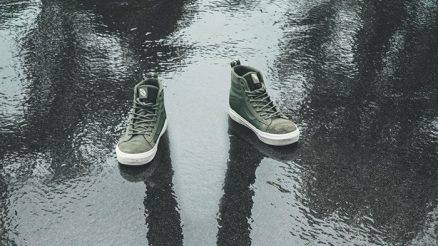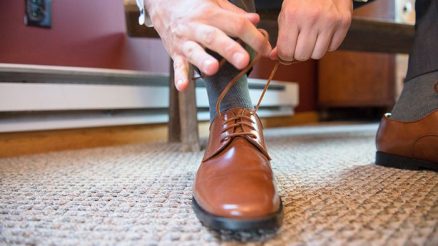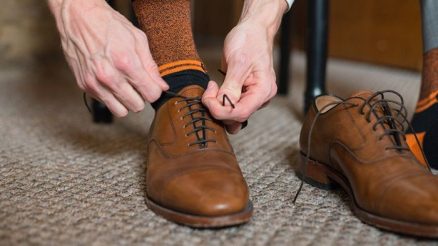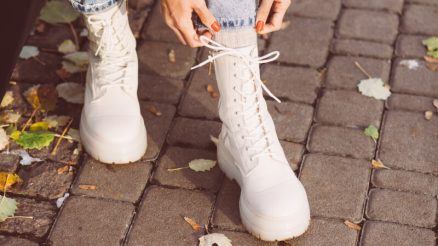Wearing tight shoes is more than just uncomfortable—it can lead to blisters, bunions, and long-term foot issues. Whether you’re breaking in a new pair or trying to revive a favorite pair that’s just a bit snug, learning how to stretch tight shoes at home can save your feet and your wallet.
Fortunately, you don’t need fancy tools or a cobbler’s workshop to stretch your shoes. With some household items and a little patience, you can create a comfortable fit. Here’s how.
Why Stretch Your Shoes?
Stretching shoes can:
-
Relieve pressure on your toes, heel, or the top of your foot
-
Prevent foot problems like corns, bunions, and blisters
-
Extend the life and comfort of your shoes
-
Make them more wearable, especially if your feet swell throughout the day
Before you begin, check the shoe material—leather, suede, and canvas are more forgiving and easier to stretch. Synthetic materials may be more resistant and require more patience.
1. Wear Thick Socks and Use the “Heat and Walk” Method
This is a classic method for leather or faux leather shoes.
What You’ll Need:
-
Thick socks
-
Hairdryer
Steps:
-
Put on a pair (or two) of thick socks.
-
Wear the shoes. It might be snug at first—stand and walk around for a few minutes.
-
Apply heat using a hairdryer—aim the hot air at the tight spots for 20–30 seconds while flexing and wiggling your feet.
-
Keep walking in them until they cool down.
Tip:
Repeat the process until the shoes stretch to your desired comfort level.
2. Use a Shoe Stretcher (Optional Tool for Better Results)
If you have a shoe stretcher at home, it’s one of the easiest and most effective methods.
What You’ll Need:
-
Shoe stretch spray (optional, but helpful)
Steps:
-
Spray the tight area with shoe stretch spray.
-
Insert the stretcher into the shoe and twist the handle to expand it.
-
Leave it in for 6–8 hours, or overnight.
-
Check the fit and repeat if necessary.
Bonus:
Some shoe stretchers come with spot plugs for targeted stretching (like bunion areas).
3. Freeze Water in the Shoes
Water expands as it freezes, which can gently stretch your shoes.
What You’ll Need:
-
Ziplock bags
-
Water
-
Freezer
Steps:
-
Fill a ziplock bag about ⅓ full of water and seal it tightly.
-
Place the bag inside the shoe, pushing it into the toe area.
-
Put the shoe in the freezer and leave it overnight.
-
Remove from freezer, let thaw slightly, then remove the bag and try the shoes on.
Tip:
Use this method only with waterproof or synthetic shoes—avoid suede or delicate materials.
4. Use Rubbing Alcohol Spray
Alcohol softens material slightly, allowing it to stretch as it molds to your foot.
What You’ll Need:
-
Rubbing alcohol
-
Spray bottle
-
Socks
Steps:
-
Mix equal parts water and rubbing alcohol in a spray bottle.
-
Spray the inside of the shoe, focusing on tight areas.
-
Put on a pair of socks and wear the shoes for 20–30 minutes.
Repeat as needed. This works well for leather and canvas shoes.
5. Stuff Your Shoes Overnight
This is a gentle, passive method to slightly widen shoes.
What You’ll Need:
-
Newspaper, socks, or rolled-up towels
Steps:
-
Moisten newspaper slightly (not wet).
-
Stuff the shoes firmly, especially in tight areas.
-
Leave them overnight.
-
Try the shoes on in the morning to test the fit.
6. Use a Shoe Stretch Spray (No Tools Needed)
There are store-bought sprays designed specifically to soften and stretch shoe materials.
Steps:
-
Spray the inside of the shoe or directly on pressure points.
-
Wear the shoes with thick socks while they’re still damp.
-
Walk around for 20–30 minutes to help the material conform.
This method is great for leather, suede, and canvas.
Stretching Tips & Warnings
-
Be patient. Stretching may take more than one session.
-
Don’t overdo it. Trying to force the stretch too quickly can damage the shoe or make it too loose.
-
Test on a small area first, especially if using alcohol or sprays on sensitive materials like suede.
-
Use caution with heat. Excessive heat can warp or dry out leather and adhesives.
When to See a Cobbler
If your shoes are still uncomfortable after trying these at-home methods, or if they’re made of expensive or delicate materials, a professional cobbler can safely stretch them using specialized equipment.
Final Thoughts
Learning how to stretch tight shoes at home can spare you from foot pain and help you enjoy your favorite pairs longer. From using thick socks and a hairdryer to freezing water bags or investing in a shoe stretcher, there’s a method for nearly every shoe type and material.
So before you give up on that snug pair, try one of these easy, budget-friendly stretching tricks—your feet will thank you.








